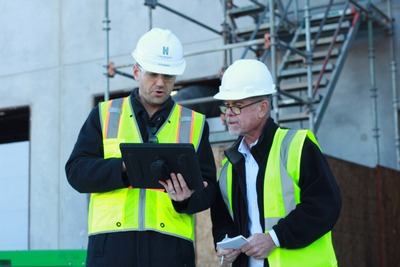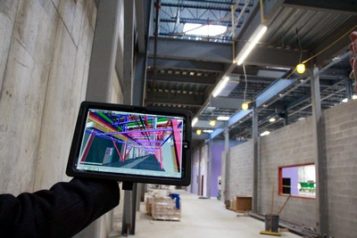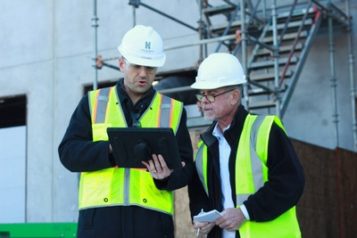
By Peter J. Barden, AIA, NCARB
Virtual reality, a computer-simulated environment that can simulate physical presence in places within the real world or imagined worlds, was once limited to the video game industry; however, it is quickly making its way into design and construction.
In gaming, VR is an immersive technology that enhances the gaming experience: explore oceans or distant planets, fly planes or battle aliens. For the construction industry and the superintendents within it, VR isn’t simply an interactive movie, but a technology with true business potential — one that can save time, money and conflicts on the job.
According to Dodge Data & Analytics, three-quarters of construction firms already use Building Information Modeling to virtually coordinate construction and avoid issues in the field. In the early stages of design, BIM enables general contractors, designers and owners to virtually walk through their spaces to ensure the vision of the owner and those bringing it to life properly align. As a project continues, reviews of the design can provide early warning signs of potential conflicts or desired changes that can then be addressed. With BIM, you essentially build twice and can adjust and inspect on the fly.
But, once embraced and adopted, VR will take virtual coordination to a new level for superintendents.
Trade coordination/management in the field
VR will assist superintendents and the subcontractor team to ensure proper placement of building systems during installation. The construction team will be able to review the final configuration prior to installation in a 360 degree, 3-D environment in order to clarify and confirm coordination among the trades.
Then there is VR’s “half-brother,” mixed reality. Unlike VR, mixed reality overlays what is seen in a virtual reality headset on the physical environment, thereby allowing the user to see his/her surroundings. This technology — the HoloLens, for example — will enable construction teams to review the coordinated model in the field prior, during and upon completion of installation to ensure the team did the work properly. By utilizing a clear flip-down visor display, similar to a pair of safety glasses, this technology can allow superintendents to manage the overlaid uninstalled items such as rain leaders or sanitary stacks in the built field environment in order to confirm, for example, core drill placement. Once in place, the same overlay approach can be utilized to confirm proper routing through the building.
Constructability reviews
The immersive environment created by using VR allows superintendents and all team members to better understand specific complexities of the project in regard to constructability and logistics. By visually indicating conflicts, resolutions can be found more efficiently and collaboration can increase across the entire project. Involving the client’s facilities management team in the VR process allows them to confirm that equipment configurations and expectations for critical spaces are correct.
4-D: scheduling
Scheduling is another layer that can be added to VR. Known as 4-D modeling, integrating time, scheduling and sequencing to a 3-D model that can be navigated in VR will allow superintendents to step into the future of their project and understand requirements and pitfalls long before they occur, while also affording the construction team the ability to ensure the construction schedule is being maintained through the review of installed components and comparing those items to the 4-D model.
In coming years, shifting to a VR environment has the potential to significantly change the processes behind design, review and construction. Technical improvements and expanded usage will set the stage for the future of VR in the industry. It is a technology that holds the promise of limitless possibilities if appropriately utilized, and the only limitations in VR rest in the industry’s willingness to adopt and utilize the technology.
View the HoloLens in action:
https://youtube.com/watch?v=kXVW4sUsh3A
Peter J. Barden, AIA, NCARB, manages Hourigan Construction’s Virtual Construction department and serves as its internal design expert. He can be reached at pbarden@houriganconstruction.com.





 Join our thriving community of 70,000+ superintendents and trade professionals on LinkedIn!
Join our thriving community of 70,000+ superintendents and trade professionals on LinkedIn! Search our job board for your next opportunity, or post an opening within your company.
Search our job board for your next opportunity, or post an opening within your company. Subscribe to our monthly
Construction Superintendent eNewsletter and stay current.
Subscribe to our monthly
Construction Superintendent eNewsletter and stay current.